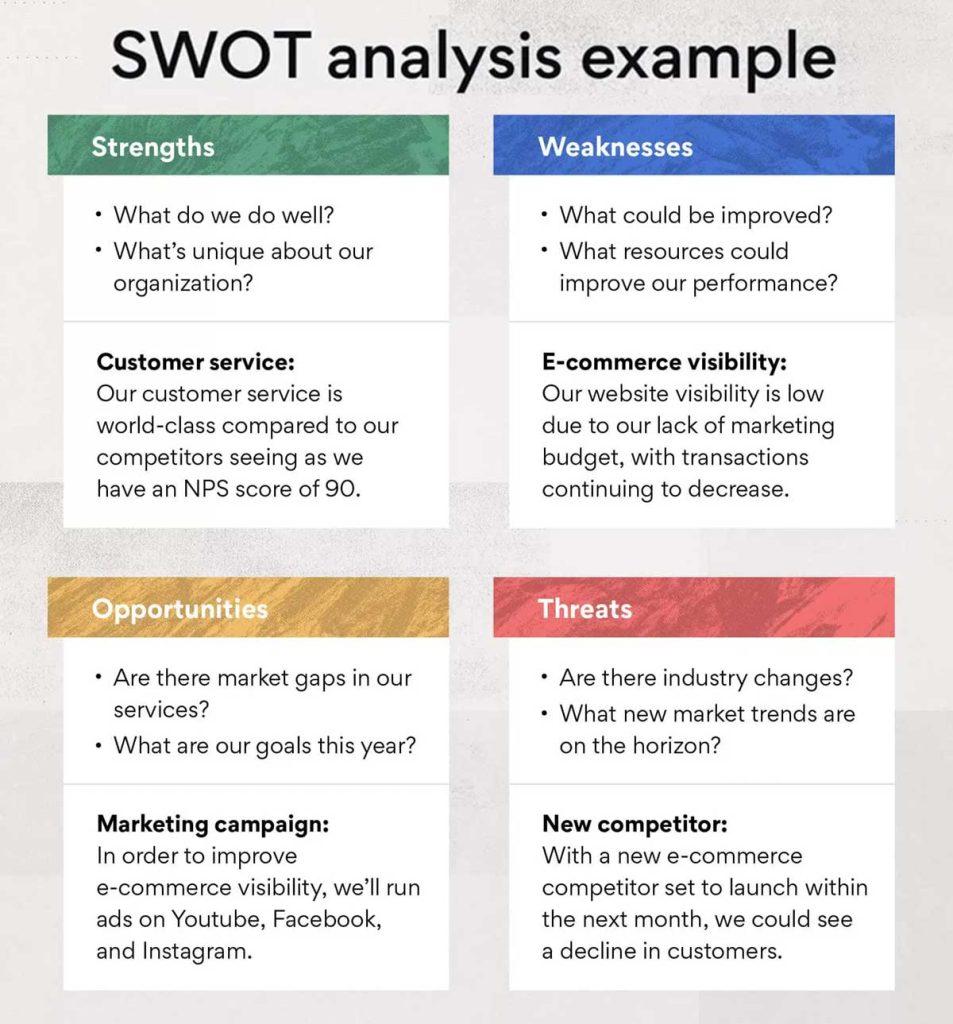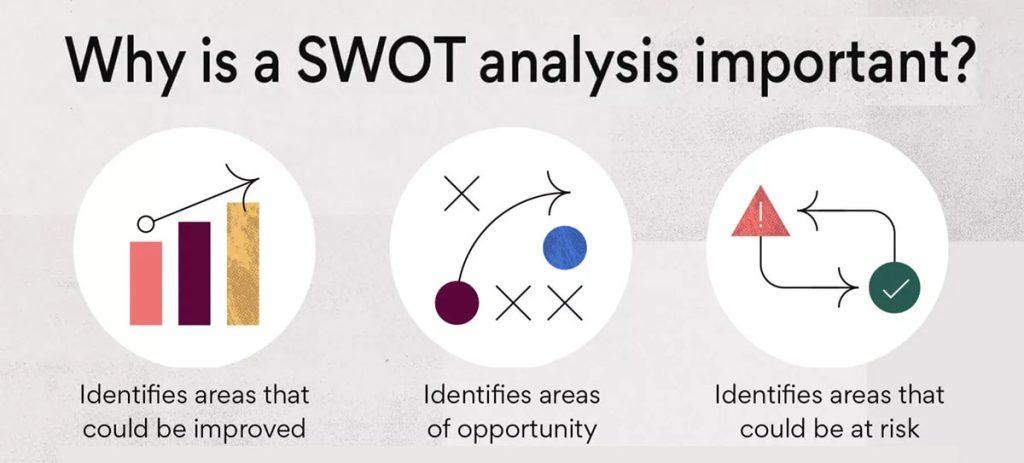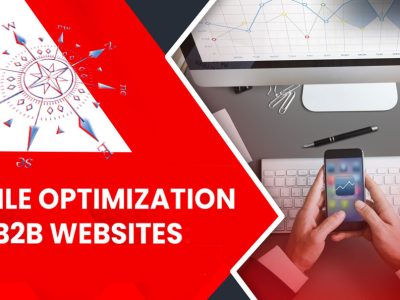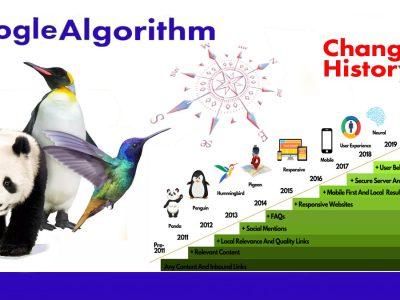Post Views: 238
Published on 04/11/2024 – Last Updated on 04/11/2024 by OTC
A SWOT analysis is a technique used to identify strengths, weaknesses, opportunities, and threats for your business or even a specific project.
It’s most widely used by organizations – from small businesses and non-profits to large enterprises – but a SWOT analysis can be used for personal purposes as well. While simple, a SWOT analysis is a powerful tool for helping you identify competitive opportunities for improvement. It helps you improve your team and business while staying ahead of market trends.
- A SWOT matrix is a tool that allows businesses or individuals to identify their strengths, weaknesses, opportunities and threats.
- SWOT matrices help organizations complete an honest assessment of a business to understand its competitive advantages and determine where it can improve.
- Creating a SWOT matrix is a simple process that enables employees to collaborate and offer valuable insight to increase a company’s success.
What is a SWOT matrix?
A SWOT matrix, often referred to as SWOT analysis, is a strategic planning tool businesses and individuals use to identify and assess the strengths, weaknesses, opportunities and threats associated with an organization, project, business plan or activity. This technique helps managers gauge how internal and external factors can affect the success or viability of new projects. A SWOT matrix can help businesses leverage their comparative advantage and achieve strategic objectives when combined with other managerial tools.
Who uses a SWOT matrix?
A SWOT matrix is applicable in a wide range of industries. People who use SWOT matrices include:
- Human resources (HR) personnel: HR personnel use SWOT matrices to determine the ideal workforce size, employee skill levels, geographical distribution of talent, language barriers, management-employee relationships and other factors that can boost productivity.
- Financial planners: SWOT matrices can help planners analyze and measure capital requirements for new and existing projects, assess company investment capacity, predict revenue and forecast financial performance.
- Strategic planners: Strategic planners can use SWOT matrices to identify their organization’s strengths and opportunities to leverage them for optimal efficiency. It can also help them identify and assess weaknesses and threats and design measures to protect their interests.
- Distributors: Sales representatives, suppliers and other professionals in the supply chain can use SWOT matrices to qualify sales partners, organize regional distribution, improve supply chain efficiency and enhance production operations.
- Operations managers: SWOT matrices can help engineers and managers analyze the efficiency and activities of factories, software and production facilities.
- Academics: People in academia can use SWOT matrices to analyze the strengths and weaknesses of students applying for a program. They can also use it to determine who to give grants to and the programs that departments should undertake based on previous successes.
- Military Head Quarters: The military can use SWOT matrices during strategic campaign planning to assess tactical strengths and compensate for weaknesses.
Benefits of a SWOT matrix
Continue Reading
Here are some benefits of using a SWOT matrix:
Flexible applications
One major advantage of a SWOT matrix is that it has a wide range of applications. Large and small businesses, governmental agencies, private individuals and nongovernmental organizations (NGOs) can use it in their operations. You can use a SWOT matrix to perform strategic planning, competitive analysis, market research, product development, and a broad range of other activities that aid decision-making.
Low costs
The SWOT matrix is a simple yet powerful tool for strategic planning. It doesn’t require extensive training or special tools if users can identify the elements of the tool that can affect their objectives. Once a staff member has in-depth knowledge of a business or organization’s environment, a SWOT matrix can be a cost-effective decision-making tool.
Actionable insights
A SWOT matrix analysis can offer valuable insights to help organizations understand the competition and their competitive advantages. This information allows users to create a strategy that caters to external risk factors. It also allows them to leverage internal strengths to maximize opportunities.
Employee contributions
A SWOT matrix analysis can promote discussion among management and employees about business performance. Since each employee has a unique role experience, they can help identify threats, opportunities and weaknesses in their department. Allowing people to contribute during the exercise can help the business analyze and mitigate threats and weaknesses and take advantage of opportunities.
Easy visualization
The SWOT matrix visually presents a company’s strengths, weaknesses, opportunities and threats. This allows managers to visualize how different factors in the company’s environment can influence outcomes and what to do to increase success rates. Since this format is easy to understand, sharing insights with external stakeholders or collaborators makes it simple.
Employee collaboration
A SWOT matrix can also improve collaboration among employees. This is because it often requires different departments of an organization to work together to achieve common goals. For example, when performing a SWOT analysis to create a new product line, sales, marketing, production, finance and distribution employees may collaborate to identify potential challenges to the new project and offer solutions.
Resource efficiency
During a SWOT analysis, managers identify the company’s strengths and opportunities. Part of the opportunities and strengths include resources, some of which the company may not use to their full potential. A SWOT analysis allows the organization to identify these resources and reorganize them for improved efficiency and productivity.
Elements of a SWOT matrix
“SWOT” stands for strengths, weaknesses, opportunities and threats. Below is an explanation of each element:
Strengths
Strengths are the qualities that give a business, organization or individual a comparative advantage over others. They’re the factors that enable a company to achieve its objectives. Strengths can be tangible resources, such as a strong balance sheet, buildings, machinery, employees and a market. Intangible strengths may include strong customer loyalty, a talented staff, patents and an excellent reputation.
Weaknesses
Weaknesses are factors that reduce an organization’s ability to accomplish its goals. They can include a lack of funds, low production capacity, unmotivated employees and a small market share. A SWOT analysis can help a business identify its weaknesses and turn them into strengths.
Opportunities
Opportunities are unexplored factors that can provide rewards for a business, project or individual. Opportunities can take the form of experience, new technology, new markets or even a poorly performing competitor. Identifying opportunities can help a business use its strengths to its advantage.
Related: How To Perform SWOT Analysis in Marketing in 6 Steps
Threats
Threats are events or factors beyond a company’s or person’s control that can affect them negatively. Also known as risks, threats are external factors that a SWOT analysis can help businesses identify and take proactive measures. This can help reduce or eliminate the threat’s effects.
How to create a SWOT matrix
Follow this simple guide to create a SWOT matrix:
First of all, Draw a square: To start your SWOT analysis, draw a large box. Divide the box into four equal squares, and label them after the elements of the SWOT matrix.
- The top-left square should be strengths,
- the top-right square should be weaknesses,
- the bottom-left square should be opportunities,
- the bottom-right square should be threats.
1. Identify your strengths
In the strengths square, list all your internal competitive advantages. These may be employees, proprietary knowledge, resources and markets. Some other strengths might be leadership, quality and productivity.
2. List your weaknesses
List your weaknesses in the corresponding square. These might include things like debt, obsolete technology and high production costs. When determining your weaknesses, you can also consider factors like your employees’ experience levels and how many clients you serve.
3. Write down your opportunities
In the opportunities square, write down potential opportunities for the company. Opportunities are circumstances or items that may help you gain a market advantage. For instance, an existing product you can use to serve a new market is an opportunity.
4. Identify any threats
In the threats square, identify any threats the organization is experiencing. A business’s threats might include a competitor with better-performing products or a stronger customer service. For individuals, a threat may be a more qualified professional who’s applying for the same position as you.
Use the following template to guide your own development of a SWOT matrix:
Here’s an example of a SWOT matrix for a large business:
Strengths
- New product line popular among buyers
- Talented staff
- Over $xxx million in marketing budget, three times more than our competitor has
- 90% customer loyalty rate
Weaknesses
- High staff turnover
- Huge production costs
- Disruptive technology
Opportunities
- New demographic that loves our product
- A merger with two companies that promise new markets
Threats
- Online retailers selling unbranded substitutes of our products
- Competitors’ use of social media channels for orders
- New government regulations that might change market conditions
Strengths:
New product line popular among buyers, talented staff, over $xxx million in marketing budget, three times more than our competitor has, 90% customer loyalty rate |
Weaknesses:
High staff turnover, huge production costs, disruptive technology |
Opportunities:
New demographic that loves our product, a merger with two companies that promise new markets |
Threats:
Online retailers selling unbranded substitutes of our products, competitors’ use of social media channels for orders, new government regulations that might change market conditions |
***

***
What you must keep in mind about SWOT matrices
Why is a SWOT matrix important?
A SWOT matrix is important because it evaluates the main aspects of a business for strategic planning. Creating a SWOT matrix helps an organization understand its own strengths and find areas where it can improve. It also allows a company to assess its goals, decide on potential business ventures and discover outside factors that may affect its success.
How do a PEST analysis and a SWOT analysis differ?
PEST analysis, which stands for Political, Economic, Social and Technological, allows a company to examine the outside factors affecting the company’s profitability and performance. While a SWOT analysis considers both internal and external factors, a PEST analysis only focuses on external factors. Completing both types of analyses can help an organization better understand the market and business objectives when planning for the future.
When should I use a SWOT matrix?
SWOT matrices can be helpful in many situations. They can be useful if a company wants to set goals and analyze progress toward certain objectives. Businesses may also use a SWOT matrix to determine how to allocate resources or evaluate the market or target audience. Individuals may do a SWOT analysis to identify their strengths for a new position and understand how effective they may be in a role.
***
Need help and clarification to elaborate your Business very 1st SWOT… Talk to PHMC GPE Team !
Discover More:
***

***



















Comments